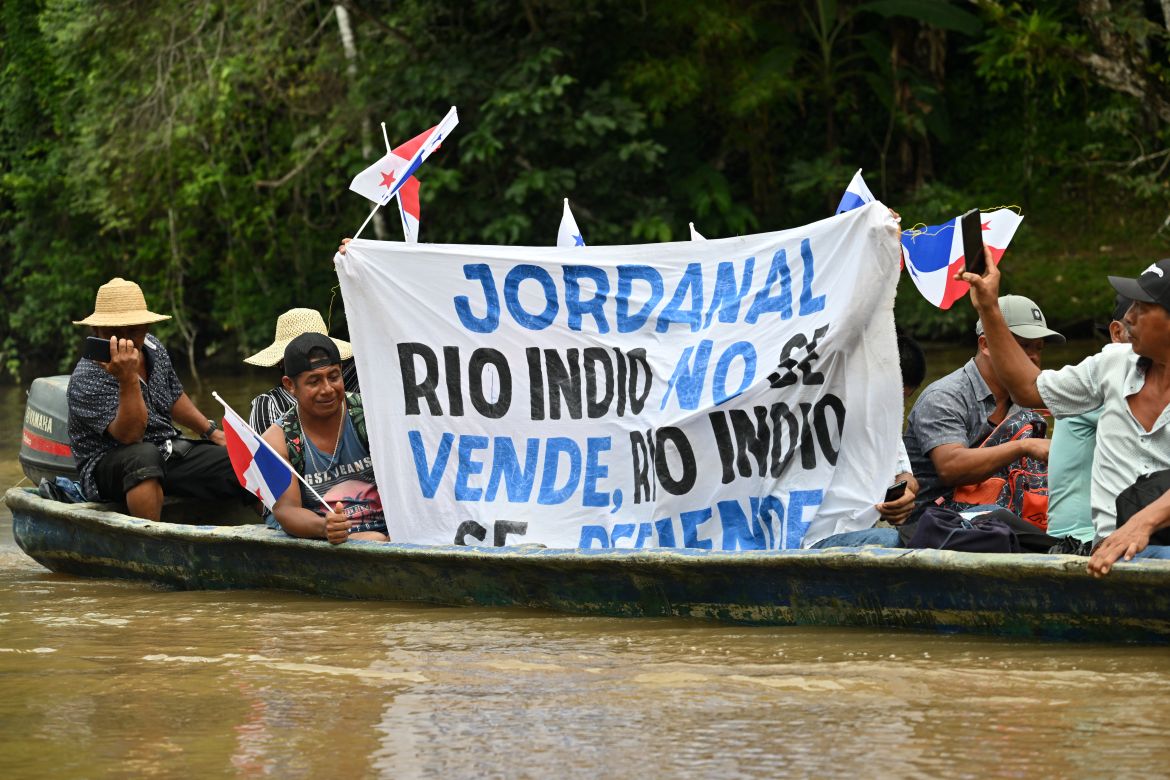In Pictures
Local communities vow to fight new Panama Canal reservoir
Panama’s new canal dam plan puts thousands of villagers at risk, prompting protests over mass displacement.

Published On 21 May 202521 May 2025
Magdalena Martinez has spent her entire life along the banks of the Indio River, but a proposed dam intended to shield the Panama Canal from drought now threatens to engulf her home.
The 49-year-old is among hundreds of residents opposing an artificial lake that would feed the crucial interoceanic waterway.
“I feel sick about this threat we’re facing,” said Martinez, who lives in a wooden house with a metal roof in Boca de Uracillo with her husband and five of her 13 children.
“We don’t know where we’re going to go.”
Martinez’s family has always lived in the small village surrounded by lush mountains, where locals depend on farming crops such as cassava and maize and raising livestock for their livelihoods.
The community insists it will not allow its homes to be sacrificed for the benefit of the world’s multibillion-dollar global shipping industry.
Last week, hundreds of villagers took to the Indio River in motorised canoes to protest against the planned dam, which would force thousands of families to relocate.
Advertisement
The Panama Canal Authority (ACP), the autonomous public body managing the waterway, decided to construct the reservoir to address severe droughts like the one in 2023, which led to drastic cuts in ship traffic.
The century-old canal, linking the Atlantic and Pacific oceans, relies on formerly abundant rainfall stored in two artificial lakes that also provide drinking water.
Used predominantly by shipping clients from the United States, China and Japan, the canal operates a lock system to lift and lower vessels, releasing millions of litres of fresh water with each transit.
The proposed reservoir, spanning approximately 4,600 hectares (11,400 acres), would deliver water through a nine-kilometre (5.6-mile) tunnel to one of the existing lakes.
The project “meets a need identified a long time ago: it’s the water of the future,” said Karina Vergara, an environmental and social manager at the ACP.
Work on the reservoir is expected to begin in 2027 and finish by 2032, with an estimated investment of $1.6bn.
Of that sum, $400m is allocated for compensation and relocation of about 2,500 people from various villages.
“We have a firm commitment to dialogue and reaching agreements” with those affected, Vergara said.
If the reservoir is not built, “we’ll regret it in 15 years,” she said.
Civil society groups warn that as many as 12,000 people could ultimately be affected by the project, which enjoys the support of President Jose Raul Mulino, as the entire Indio River basin would be affected.
Advertisement
The 80-kilometre-long Panama Canal handles six percent of global maritime trade and remains vital to Panama’s economy.
It is also at the centre of a diplomatic row, as former US President Donald Trump has repeatedly threatened to “take back” the waterway, handed over to Panama in 1999, citing alleged Chinese influence.

Advertisement





Advertisement


